NGS 2017 Conference Wrap-Up, Part I
I attended my first National Genealogical Society Family History Conference last week in Raleigh, North Carolina and I wasn’t disappointed. Since I’m within a reasonable driving distance I thought I had better take the chance to go. Next year NGS will be in Grand Rapids, Michigan and in 2019, Saint Charles, Missouri (neither of which are in reasonable driving distance). I’ve been to much larger conferences before for my day job but this was my first large genealogy conference. The Raleigh Convention Center is a beautiful facility right in downtown. I really don’t know how many people attended but I would guess maybe 2,000 – 3,000.
Sessions
The conference kicked off on Tuesday, May 10, 2017 with an opening session primarily welcoming everyone to North Carolina and explaining how the conference committee arrived at “Family History Lives Here” as the theme this year. They also announced several awards and prizes.
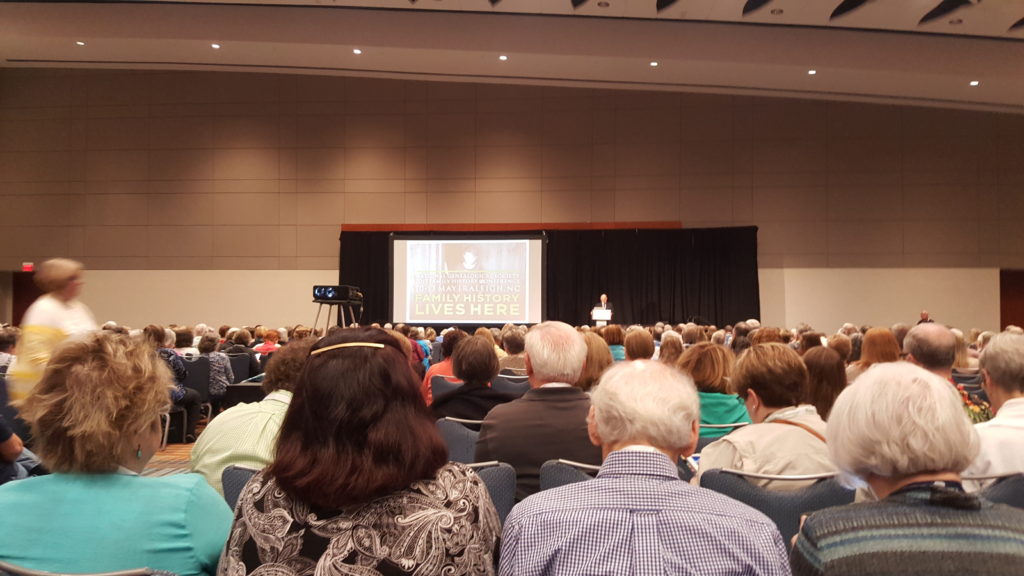
Choosing sessions is always difficult when you have overlapping topics of interest. Since this was my first NGS conference, I wanted to see as many genie rock stars as possible, even if that meant missing out on some of the geography-themed lectures. As it turned out, I heard plenty of presenters weave geographic concepts into their lectures even if it wasn’t called out explicitly. Just confirmation for me that you can’t have one (genealogy) without the other (geography).
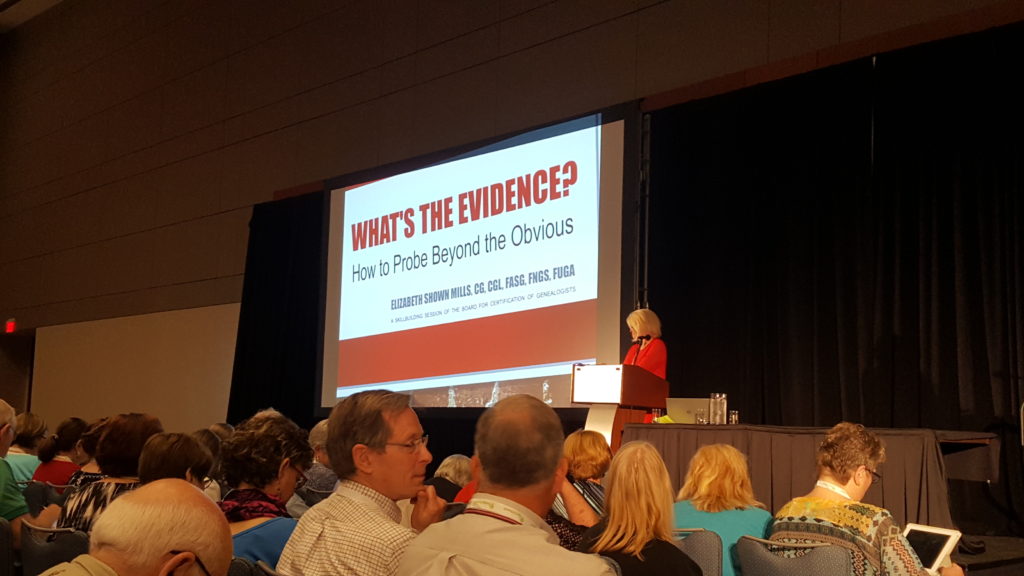
I’ve watched a lot of webinars online and have become familiar with many professional genealogists so I thought it would be fun to see them in person. For the most part, they were all just as polished and professional in person. I saw Judy Russell speak about “The Law and the Reasonably Exhaustive (Re) Search,” Barbara Vines Little on “Recreating Your Ancestor’s Neighborhood,” Michael Hait with “One Dollar and Natural Love and Affection: Analyzing Deeds Deeply,” and Tom Jones on “Converting a Bunch of Information into a Credible Conclusion.” Of course, I also saw all three lectures by Elizabeth Shown Mills — I don’t know how you cannot see all of her lectures. They are particularly critical if you are learning about the professional standards. She spoke about how to organize your research (write research reports as you go and create individual reports!), digging out evidence from sources that may not be obvious, and how to get your mindset in the right place to be a successful researcher. All of the speakers mentioned above hold Certified Genealogist credentials.
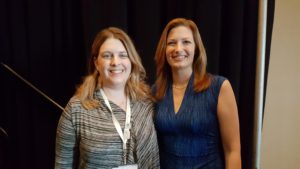
I also saw well-known “genealebrities” as Mary Tedesco called herself (tongue-in-cheek) in her lecture on “Social Media for Genealogists.” She is one of the hosts on the PBS series Genealogy Roadshow. She was a lot of fun and had some great advice for professional genealogists and genealogy societies on the use of social media. Her partner on that show, D. Joshua Taylor, was also at the conference where I saw him talk about finding the political leanings of your ancestors. This was one of the few presentations where most of the information was completely new to me.
Although DNA is THE hot topic in genealogy right now, I only saw a couple of DNA-themed presentations, mainly because I feel fairly comfortable with the introductory information and I didn’t want to miss other lectures. Diahan Southard was impressive and very honest in talking about how she uncovered the birth family of her adopted mother through traditional genealogy methods and DNA analysis. I also think she has the best looking slides in the business! Blaine Bettinger, an attorney and long time DNA blogger (and now book author on genetic genealogy) spoke on the ethics of DNA testing.
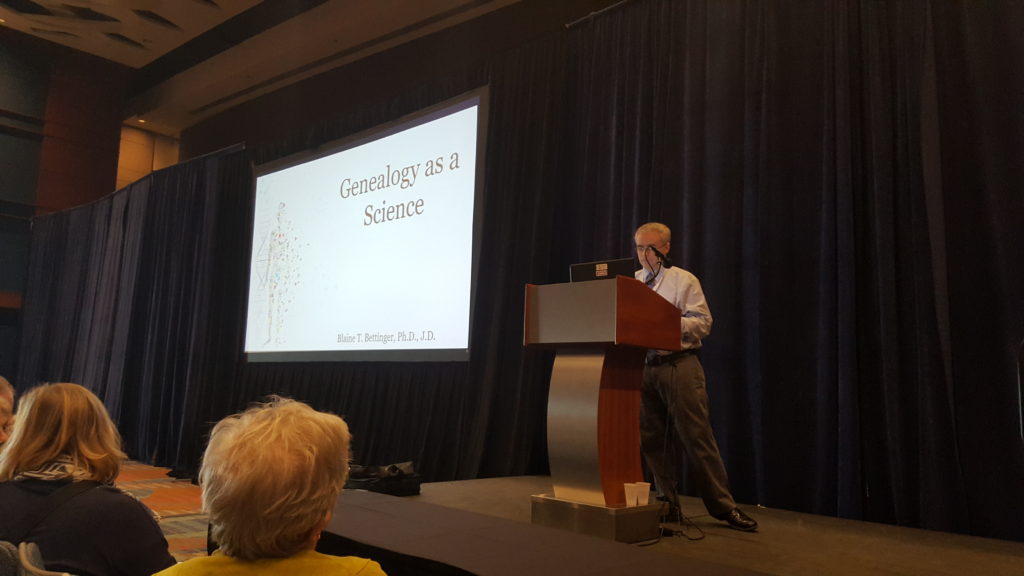
He also gave an interesting talk called “Genealogy as a Science.” The basic premise explored whether we can use scientific evaluations to give our genealogy conclusions more weight (such as probabilities). One example he talked about was including information about how many people of a certain name are found in the 1870 census in a certain area which can increase your confidence that the person is likely the one you are trying to identify. I spoke with him a little during his book signing about this. He said this was a new area he was exploring and a little outside his comfort zone, but he was very interested in it.
Rounding out the week, I also saw presentations on using tax lists in Virginia and Kentucky (yes!), the history of Quakers in North Carolina (yep, I have some of those in my tree), and a presentation about building StoryMaps. I had to go see that one as it was given by Charles Wells, CG, who is retired from Esri, the company that makes the GIS software I use on a daily basis. I was mainly interested to see what examples he would use and also gauge how comfortable the audience was with the technology learning curve. I plan to write about StoryMaps sometime in the future when I get a chance to finally create some examples.
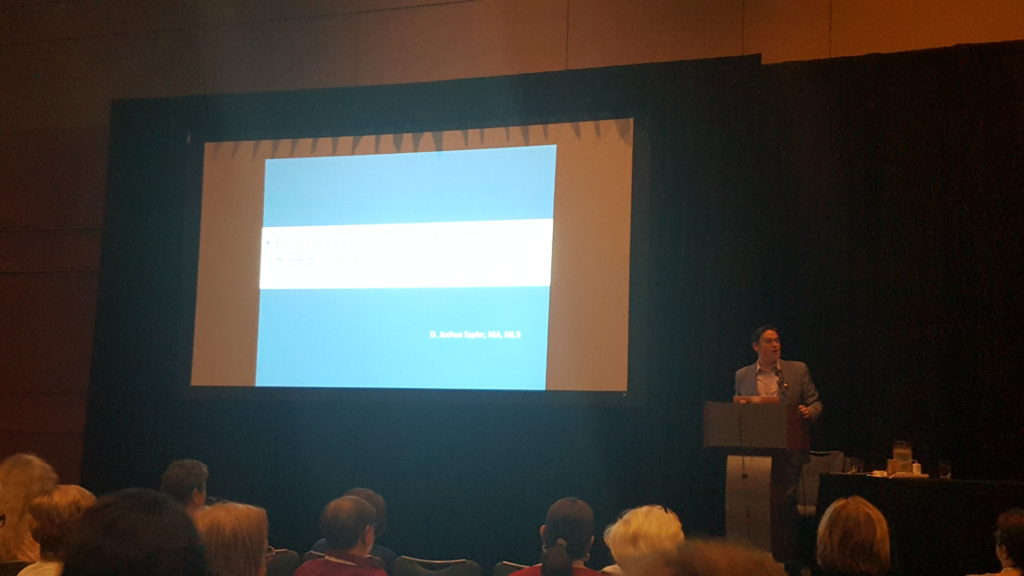
Follow me over to Part II to see what was happening in the Exhibit Hall!